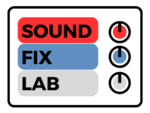Setting the threshold is a critical step in utilizing compression effectively in your music production. The threshold determines when the compressor begins to act upon the audio signal, making it an essential parameter to understand and adjust. In this step-by-step guide, we’ll explore the art of setting the threshold and provide practical tips for achieving optimal results in your mixes. Let’s dive in and take control of your compression!
Part 1: Understanding Threshold Basics
The threshold is the level at which the compressor starts to reduce the dynamic range of the audio signal. It acts as a gatekeeper, determining when the compression kicks in. A higher threshold means the compressor will affect only louder sounds, while a lower threshold engages compression more frequently.
Part 2: Analyzing the Audio Material
Before setting the threshold, carefully listen to the audio material you’re working with. Identify the dynamic range and note any sections that may require compression. Pay attention to the loudest and softest parts, as they will inform your threshold adjustments.
Part 3: Starting Conservatively
As a beginner or when working with delicate sources, it’s generally recommended to start with conservative threshold settings. Begin by setting the threshold higher, allowing the compressor to engage only during louder and more intense sections. This approach helps retain the natural dynamics and avoids excessive compression.
Part 4: Balancing Compression and Artistic Intent
Adjust the threshold to find the right balance between controlling dynamic range and preserving the artistic intent of the music. For genres that rely on dynamic expression, such as jazz or classical, a higher threshold might be suitable to maintain the performance’s nuance. In contrast, genres like EDM or pop might benefit from more aggressive compression with a lower threshold.
Part 5: Active Listening and Adjustments
Listen attentively to your mix while adjusting the threshold. Make incremental changes and observe how they affect the overall sound. Pay attention to the impact on individual elements and the mix’s balance. Compare your mix with reference tracks to ensure it aligns with your desired style and genre.
Part 6: Dynamic Control and Musicality
Keep in mind that compression shouldn’t be solely about reducing dynamic range. It should serve the musicality of the track. Adjust the threshold to maintain the desired level of expression and ensure the quieter parts aren’t overly compressed, robbing the performance of its dynamics.
Part 7: Experimentation and Artistic Choices
Don’t be afraid to experiment with different threshold settings to achieve unique effects or creative results. In certain cases, intentionally setting a low threshold to heavily compress a specific element can create interesting textures or stylistic choices. Trust your ears and embrace the creative possibilities.
Setting the threshold is a key step in effectively utilizing compression to shape the dynamics of your audio material. By understanding the basics, starting conservatively, and finding the right balance between compression and artistic intent, you’ll be able to harness the power of compression to enhance your mixes. Remember, it’s an iterative process that requires careful listening and experimentation. With practice and a keen ear, you’ll master the art of setting the threshold and take control of your compression like a pro. Keep exploring and refining your techniques, and enjoy the journey of creating amazing music!




